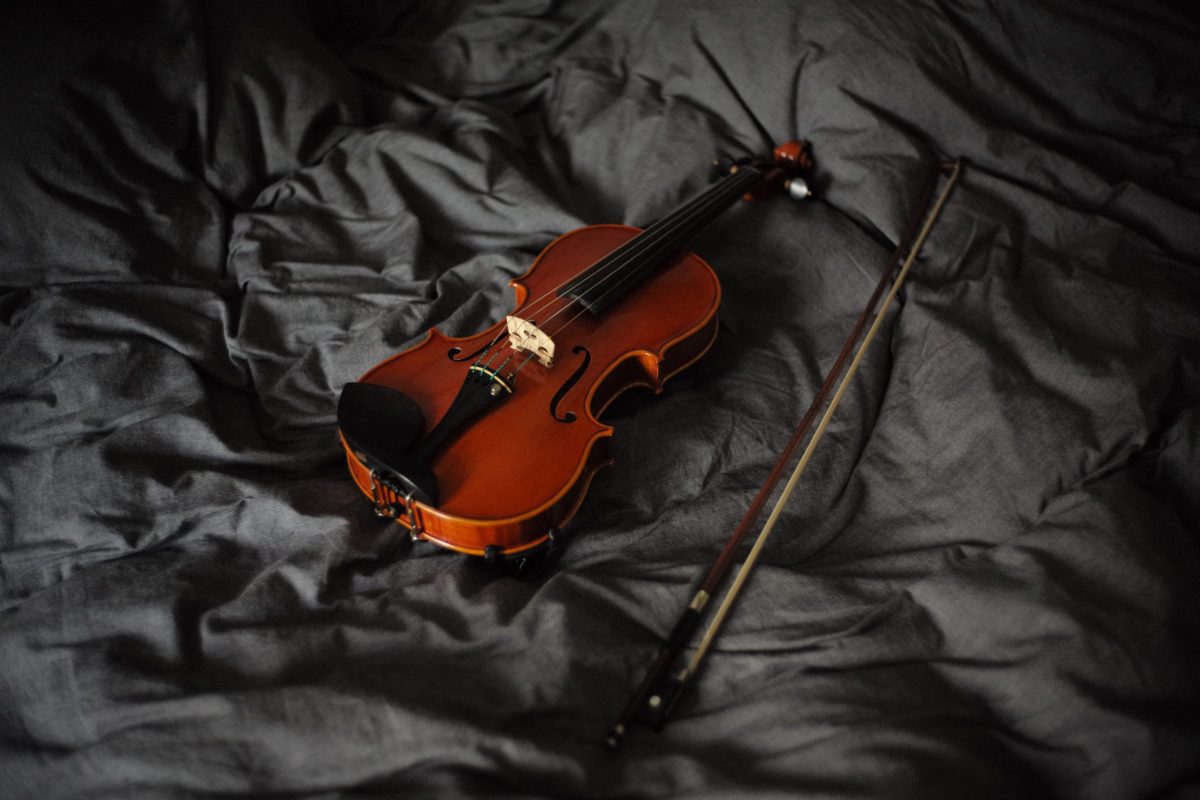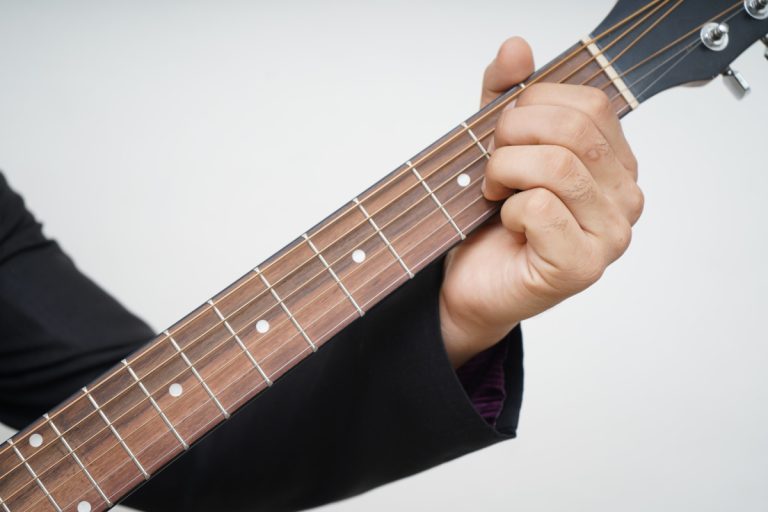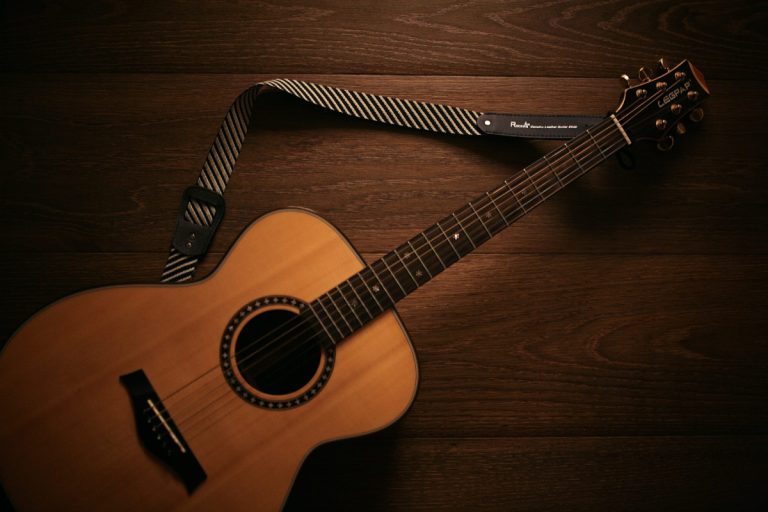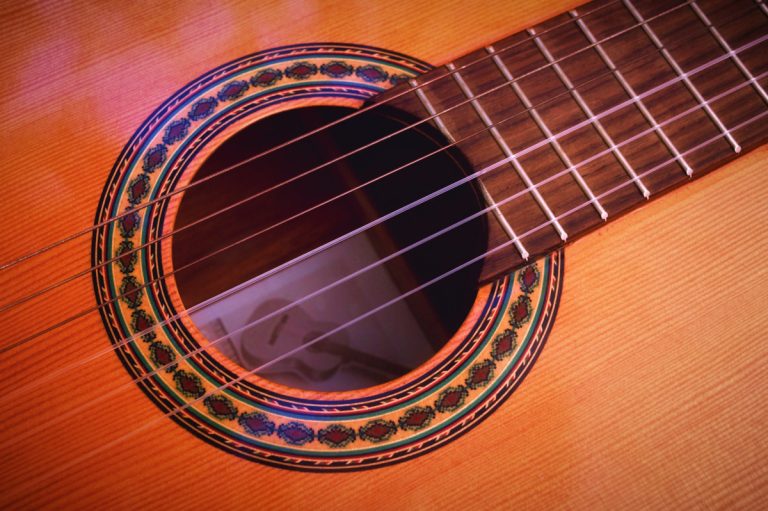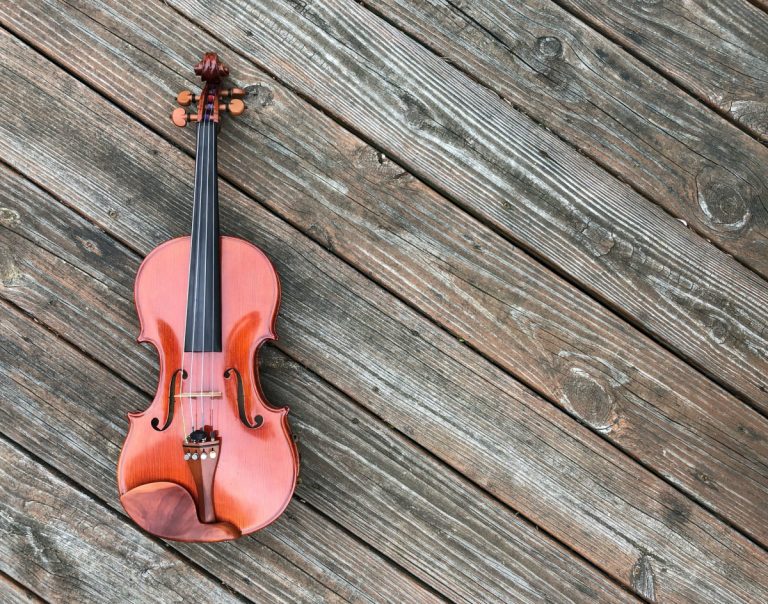Hey, violinists! Do you want to take your sound to the next level? Well, finding the best violin bow is crucial. But with so many options out there, it can be overwhelming to know where to start. But fear not!
This article will cover a guide to the best violin bows on the market. From budget-friendly options to high-end professional bows. You can read about the top brands and what makes their bows stand out. So whether you’re a beginner or a pro, it’s worth finding the perfect bow. With the right bow in hand, you can make beautiful music for years to come.
Fasten your seatbelt and start reading for you to learn more.
The History and Role of the Violin Bow
History
Are you ready to dive into the fascinating history and role of the violin bow?
The earliest versions of the violin bow were likely simple sticks with horsehair tied to one end. Over time, these crude bows evolved into more sophisticated designs, with skilled craftsmen experimenting with different materials and shapes to create the perfect tool for their trade.
One of history’s most influential bow makers was Francois Tourte, a French craftsman who lived in the late 18th and early 19th centuries. He standardized the shape and size, making it more versatile and better suited to the changing needs of the music. The baroque bow, used in the early 18th century, produced a more tapered sound as you moved towards the tip, while the modern bow has a more even taper.
Tourte’s bows were renowned for their balance and agility, and his innovations set the standard for violin bow design for generations to come.
Role
But have you ever stopped to think about the role of the bow in producing that sound? It allows musicians to create various sounds, from soft and delicate to loud and powerful. The bow’s ability to control notes’ duration, pitch, and intensity gives the violin its distinctive sound.
But the violin bow is not just a tool for musicians – it’s also a work of art in its own right. The finest bows are meticulously crafted from the highest quality materials, such as Pernambuco wood from Brazil, and adorned with intricate designs and engravings.
Types of Violin Bows
The best violin bows are available on the market with unique characteristics. This section will explore the three main types of violin bows: wooden, carbon fibre, and hybrid.
Wooden Bows
Wooden bows are the traditional choice for violinists. They’re made from high-quality wood like Pernambuco, brazilwood, and ebony. These bows are known for their warm, rich sound and excellent responsiveness. However, wooden bows are sensitive to changes in temperature and humidity, which can affect their performance. They also require more maintenance than other types of bows, such as repairing and occasional refinishing.
Carbon Fiber Bows
Carbon fiber bows are a popular choice for modern violinists. They’re made from a composite material that is lightweight, durable, and resistant to changes in temperature and humidity. They’re known for quick response, stability, and consistency. They’re also less expensive than wooden bows and require less maintenance. However, some violinists may find that carbon fiber bows lack the warmth and character of wooden bows.
Hybrid Violin Bow
Hybrid violin bows are a combination of wood and carbon fiber. They have a wooden shell and a carbon fiber core, which makes them more durable and resistant to changes in temperature and humidity.
Hybrid bows offer the best of both worlds: the warmth and character of a wooden bow and the stability and consistency of a carbon fiber bow. They’re also less expensive than high-end wooden bows and require less maintenance. However, some violinists may find that hybrid bows lack the responsiveness and nuance of a high-end wooden bow.
Factors to Consider When Choosing a Violin Bow
Bow Material
One of the most popular materials used for violin bows is Pernambuco wood, a tree native to Brazil. Pernambuco is highly valued for its flexibility, responsiveness, and tonal qualities. Many professional violinists consider Pernambuco bows the gold standard in the industry.
Another material used for violin bows is synthetic materials like fiberglass, which can provide a strong and stable bow that is less expensive than traditional wooden bows. They also offer a unique aesthetic, as they can come in various bright and bold colors, making them a fun and playful option for younger players.
Bow Weight and Balance
A well-balanced bow will feel comfortable in your hand and allow you to play with greater control and precision. The weight of the bow can also affect the sound it produces. A heavier bow can produce a fuller, more powerful sound, while a lighter bow can produce a brighter, more focused sound.
Warranty
A good warranty can give you peace of mind and protect you from defects or issues with the bow. Look for a warranty covering the bow for at least a year, and read the fine print to understand what is covered.
Flexibility
A more flexible bow can produce a wider range of tones, allowing for more expressive playing. However, a too-flexible bow can be difficult to control and may produce a weaker sound.
Sound Quality
The right bow should produce a clear, rich, and balanced sound that complements your playing style and the tone of your violin. Try out different bows to find the one that produces your desired sound.
Best Carbon Fiber Violin Bows
Fiddlerman Carbon Fiber Violin Bow
it’s lightweight and easy to handle, making it ideal for students who are just starting out. It also produces good sound and is reasonably priced, making it a great value-for-money option.
Fiddlerman Carbon Fiber Violin Bow
DURABLE AND AFFORDABLE BOW
Perfect For: Beginners and intermediate
Features:
- Made from high-quality carbon fiber composite
- Copper-mounted ebony frog
- Quality Siberian horsehair
Pros:
- Made from high-quality carbon fiber composite
- Copper-mounted ebony frog for added elegance
- Quality Siberian horsehair for a smooth and even tone
Cons:
- It may not be suitable for advanced
The TedScore: 7/10
JonPaul Avanti Carbon Fiber Bow
It’s a bow designed for violinists looking for a reliable, high-quality bow that produces a rich, warm tone. It’s made from carbon fiber, which offers excellent strength and flexibility.
JonPaul Avanti Carbon Fiber Bow
HIGH-QUALITY BOW
Perfect For: Professional player
Features:
- Made of a single but durable carbon fiber body construction
- Features a walnut diamond finish
- Has a high-quality grade round stick with a Peccatte Malign-style head
Pros:
- Produces a sweet, warm tone with a smooth pull
- Agile, alert, and amazing
- Lightweight and durable
Cons:
- Expensive
The TedScore: 8/10
CodaBow Diamond GX Carbon
This bow is perfect for players looking for an upgrade. It’s made of carbon fibre, so it’s lightweight and easy to handle. The bow produces a warm, rich sound that is perfect for classical music.
CodaBow Diamond SX
DURABLE AND VERSATILE BOW
Perfect For: Intermediate and advanced players
Features:
- Blended acoustic core for a focused and bright sound
- GlobalBow technology for consistent performance across different climates and humidity levels
- Made from high-quality carbon fiber
Pros:
- Available in a range of colors
- Produces a focused and bright sound
- Durable and long-lasting
Cons:
- Higher price point
The TedScore: 8/10
Best Wooden Violin Bows
AMZZ Professional 4/4 Brazilwood Bow
It’s fully silver-lined and made of select, high-quality, dense Pernambuco. The new generation of AMZZ Violin bows is taking the next step to improve your instruments’ playing and sound. It’s completely handmade.
AMZZ Professional 4/4 Brazilwood
GOOD QUALITY BOW
Perfect For: Students to professional
Features:
- Made from high-quality Brazilwood
- Octagonal stick shape for a comfortable grip
- Ebony frog with brass alloy and genuine, high-quality lizard leather grip
- Natural Mongolian horsehair
Pros:
- Provides a warm and mellow tone
- The lightweight design makes it easy to handle and control
- Provide a comfortable grip that’s easy on your fingers
Cons:
- None
The TedScore: 8/10
Artino Baroque Snakewood Violin Bow
A master bowmaker makes it with traditional handcraft skills. It has excellent flexibility, easier to rosin and is more durable. This is a really fine snakewood violin bow with an outstanding balance. So even and full, it draws out the soul of the instrument. With this one, you can perform confidently, and it will have a consistently good sound.
Artino Baroque Snakewood Violin Bow
GOOD BOW FOR YOUR CHOICE
Perfect For: Professional
Features:
- Use unbleached BLACK Mongolian horsehair
- The baroque fiddle arch has a snakewood stick in a round shape
- Snakewood frog and legs
Pros:
- Unique and visually striking due to the natural grain patterns of the snakewood
- Fast action, response with a warm sound.
- Great balance point makes it players easier to control a bow
Cons:
- It may not be suitable for all playing styles or genres
The TedScore: 8/10
Franz Sandner Pernambuco Bow
This is perfect for advanced players looking for a traditional wooden bow. It’s made of pernambuco wood and produces a warm, rich sound perfect for classical music.
QUALITY VIOLIN BOW
HIGH-QUALITY WOODEN BOW
Perfect For: Intermediate to advanced player
Features:
- German-made Paulus ebony frog with a Parisian eye
- Three-part button
- Silver winding
- Available in 4/4 size
Pros:
- Produces a warm and rich tone
- Made from high-quality Pernambuco wood
- Provides a secure and comfortable grip
Cons:
- Limited availability compared to other wood bows
The TedScore: 8/10
Best Hybrid Violin Bows
Fiddlerman Hybrid bow
It’s a violin bow that combines both wood and carbon fiber materials, which provides a traditional look and feel while also offering durability and strength. This combination of materials makes the Fiddlerman Hybrid bow versatile and cheaper bows.
Fiddlerman Hybrid bow
HIGH-QUALITY WOODEN BOW
Perfect For: Intermediate to advanced player
Features:
- Carbon fiber core with a pernambuco wood wrapping
- Handmade design
- Copper-mounted ebony frog with a Parisian eye
- Natural Mongolian horsehair
Pros:
- Ensures quality and attention to detail
- Provides a secure and comfortable grip
- Produces a smooth and even tone
- Easy to handle and control
Cons:
- It may not be suitable for players who prefer the sound and feel of a traditional wooden bow
The TedScore: 8/10
VINGOBOW Wood and Carbon Fiber Hybrid Violin Bow
It’s a 4/4-sized bow combining the carbon fiber core and wood skin. It looks just like a wooden bow but stronger even than Pernambuco, as a beautiful combination of hardness, resilience and flexibility. Provides smooth and fast sonic waves.
VINGOBOW Wood and Carbon Fiber Hybrid Violin Bow 4/4 Size
GOOD STRONG BOW
Perfect For: Beginner
Features:
- Genuine cow leather grip and elegant nickel silver thread winding
- Hybrid carbon arch made by a master bow-maker
- Premium natural horsehair
Pros:
- Offers the sound quality of a wooden bow with the durability of a carbon fiber bow
- Made by a master bow-maker, ensuring high quality
- Offers a comfortable and secure hold
Cons:
- Expensive
The TedScore: 8/10
Arcus M-Series Violin Bow
It’s a line of hybrid violin bows that is known for its excellent balance, responsiveness, and warm, rich tone. These bows combine the durability and stability of a carbon fiber bow with the traditional sound and feel of a wooden bow.
Arcus M-Series Violin Bow
EXCEPTIONAL BOW
Perfect For: Beginner to intermediate
Features:
- Hybrid construction that combines a carbon fiber core with a wooden outer layer
- Snakewood frog
- With silver fittings
Pros:
- Excellent balance and responsiveness
- With a warm, rich tone
- Durable and stable construction
Cons:
- Some players may find the hybrid construction to be less responsive than a traditional wooden bow
The TedScore: 7/10
Best Violin Bow Brands
The bow is the secret ingredient that produces the rich, full-bodied sound we all love. But with so many options available, how do you know which brands to trust?
Don’t worry; we’ve got you covered! We’ve scoured the market to bring you the best violin bow brands that are sure to impress. There’s something for everyone, from traditional wooden bows to modern carbon fiber bows. So, without further ado, here are the brands that have established themselves as leaders in the industry.
CodaBow
They have high-quality craftsmanship and a huge variety of bows to try out. It’s a well-respected brand that produces some of the best carbon fiber bows on the market. Their bows are known for their balance, responsiveness, and durability.
It offers a range of models to suit different playing styles and preferences, from the Diamond GX, ideal for professional musicians, to the Diamond NX, perfect for students and beginners. Also, CodaBow bows are known for their excellent sound quality, allowing for greater nuance and expression in your playing.
JonPaul
This brand has established itself as a leader in the industry, producing high-quality carbon fiber violin bows known for their excellent sound quality and responsiveness.
One of the unique features of JonPaul bows is their traditional craftsmanship. They’re designed to have the look and feel of antique wooden bows but with the advantages of modern carbon fiber materials.
It also offers a range of models to suit different playing styles and preferences, from the Avanti, designed for professional musicians and ideal for students and beginners. Additionally, JonPaul bows are known for their excellent balance and responsiveness, allowing for greater nuance and expression in your playing.
Arcus
A well-known and respected brand in the world of violin bows. The company was founded in 1998 by Johannes Finkel, who sought to create a new standard in bow-making using innovative materials and techniques.
Arcus bows are crafted using carbon fiber and other advanced composite materials, which offer several advantages over traditional wooden bows. These materials are lightweight, durable, and highly resistant to changes in temperature and humidity, making them ideal for musicians who perform in various environments.
One of the most popular products from Arcus is their S-series violin bow. This bow is crafted from a unique composite material that combines carbon fiber and Kevlar and is designed to offer exceptional control and response. The S-series bow is highly responsive and produces a clear, focused tone, making it a great choice for professional musicians.
Fiddlerman
It’s a brand that has quickly become a favourite among violinists of all skill levels. Founded in 2010 by violinist Pierre Holstein, Fiddlerman is committed to making high-quality violins and bows accessible to everyone, regardless of their budget.
Fiddlerman bows are known for their exceptional playability, responsiveness, and sound quality. Each bow is handcrafted using high-quality materials, such as Pernambuco wood, carbon fiber, and fiberglass, ensuring they’re durable and long-lasting.
Glasser
It’s a well-known brand in the world of violin bows and accessories. The company was founded in 1938 by Gustave Glasser, who had a passion for creating high-quality, durable instruments and bows that could withstand the demands of professional musicians.
Glasser produces a wide range of products, including violin, viola, and cello bows, as well as cases and accessories. Their bows are made from various materials, including Pernambuco, carbon fiber, and fiberglass.
One of the most popular products from Glasser is their Carbon Composite bow. This bow is made from a composite material that combines the strength and durability of carbon fiber with the traditional feel and responsiveness of a wooden bow. The Carbon Composite bow is affordable and offers excellent playability and sound quality, making it a great choice for beginner to intermediate players.
D Z Strad
It’s a popular brand for musicians and enthusiasts around the world. The company was founded in 2004 by master violin maker Dezheng Zhen, who brings over three decades of experience to his craft.
Also, it produces a wide range of violins, violas, cellos, and bows, each of which is carefully crafted using traditional methods and the finest materials. The company’s instruments are known for their exceptional sound quality, playability, and overall craftsmanship.
One of the most popular products from D Z Strad is their Model 101 violin. This violin is handcrafted from aged spruce and maple and is finished with a beautiful antique varnish that gives it a rich, warm tone. The Model 101 is highly affordable, making it a great choice for beginner and intermediate players.
How to Care for Your Violin Bow
1. Regularly cleaning your bow can help to prevent damage and keep it looking good. Use a soft cloth to gently wipe down the stick and frog after each use. Avoid using any harsh chemicals or abrasive materials that could scratch the surface.
2. Rosin helps to create friction between the bow hair and the strings, which produces sound. However, too much rosin can cause a build-up on the strings and the bow hair, affecting the sound quality. Rosin your bow once a week if you’re a beginner or once a day if you’re an advanced or professional violinist.
3. When you’re finished playing, always loosen your bow to relieve the tension on the stick and hair. This will help to prevent warping and damage to the bow over time.
4. Store it in a protective case when not in use to prevent it from getting damaged or exposed to extreme temperatures. Avoid leaving it lying around on a surface where it could get knocked or damaged.
5. Get your bow repaired regularly: Over time, the hair on your bow will wear out and become less effective. Regularly getting your bow repaired can help ensure it produces the best possible sound. The repair frequency will depend on how often you play, but a good rule of thumb is to have it done once a year.
By following these simple tips, you can help to keep your violin bow in great condition and ensure that it continues to produce beautiful music for years to come.
Top Takeaways
It’s essential to find a comfortable bow that produces the sound that you desire. Don’t be afraid to try out different bows and seek advice from professionals. We hope this article has provided valuable information to help you choose the best violin bow for your needs. Happy playing!
Now that you know more about the best violin bows, it’s time to put your knowledge into practice. Grab your violin and bow, and start playing some beautiful music. Remember, practice makes perfect, so keep honing your skills and never give up on your passion for music. As they say, “When words fail, music speaks.”
Wait, there’s more!!!
Are you ready to take your violin playing to the next level and leave your audience in awe? Whether a beginner or a seasoned musician, mastering the violin requires dedication, patience, and a love for the instrument. But fear not. Check outImprove Your Violin Technique, where we’ll provide a few tips and tricks. You can improve your violin technique and make your music soar like never before! So, grab your bow, tune your strings, and journey through the world of violin playing, where every note is a step towards greatness!
FAQs
What is the best professional violin bow?
Strings Kings considers the Glasser X-Series Carbon Fiber X-Bow with Horsehair the best professional violin bow for its professional-level quality and materials used in the construction and high-quality sound and performance. However, it was expensive.
How much does a really good violin bow cost?
The cost of a really good violin bow can vary widely depending on the brand, materials, and craftsmanship. You can expect to pay anywhere from $500 to $10,000 for a high-quality bow, but finding one that feels comfortable and suits your playing style is essential.
What to look for when buying a violin bow?
When buying a violin bow, look for a bow that feels comfortable in your hand and suits your playing style. Consider factors such as weight, balance, material, and price, and try out multiple bows before making a final decision.
What is a good violin bow for beginners?
A good violin bow for beginners is the Fiddlerman Carbon Fiber Violin Bow, which is hand-made from carbon fibre and features high-quality Mongolian horsehair. It’s a great budget option for beginning and intermediate violinists, offering excellent quality for the price and a real leather grip.
Does the Brand of a Violin Bow Matter?
Yes, the brand of a violin bow can matter as different brands offer different features, materials, and craftsmanship quality. Some brands are known for producing high-quality bows, so it’s important to research and chooses a reputable brand when looking for a violin bow.
Does a beginner need a different violin bow than a professional?
Yes, a beginner may need a different violin bow than a professional, as a beginner may not need a high-end bow and may benefit from a more affordable option that is easier to play. Conversely, a professional may require a higher-end bow with more nuanced control and sound quality.
Can You Use a Cello Bow to Play the Violin?
Technically, you can use a cello bow to play the violin, but it’s not recommended as it is designed differently and may not produce the desired sound or be comfortable to play. It’s best to use a bow specifically designed for the violin.
What is the Ideal Bow Weight?
The ideal bow weight can vary depending on the player’s preference, but generally, a violin bow should weigh between 58-61 grams, a viola bow should weigh between 69-74 grams, and a cello bow should weigh between 78-84 grams. Finding a bow that feels comfortable and balanced in your hand is important.
